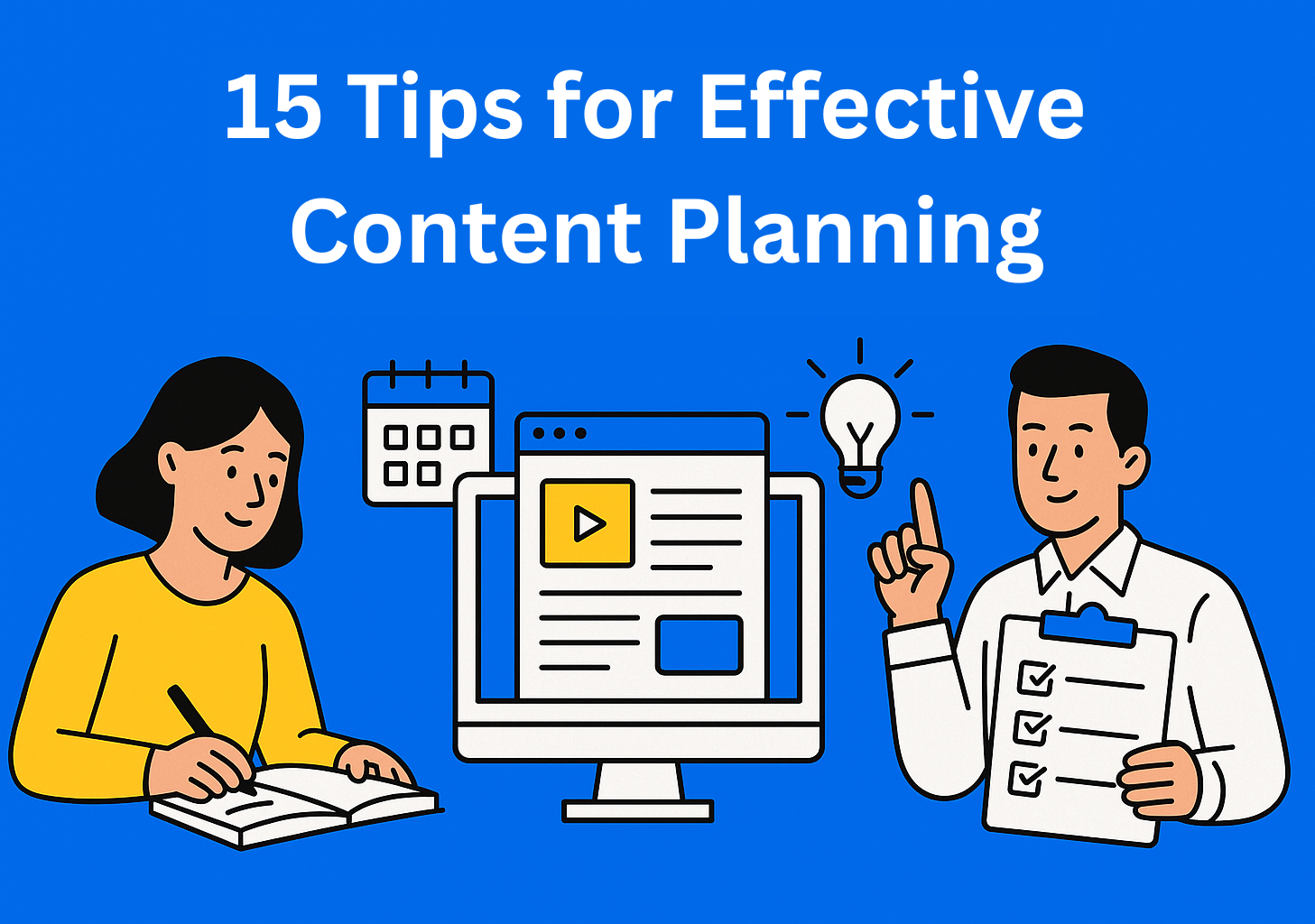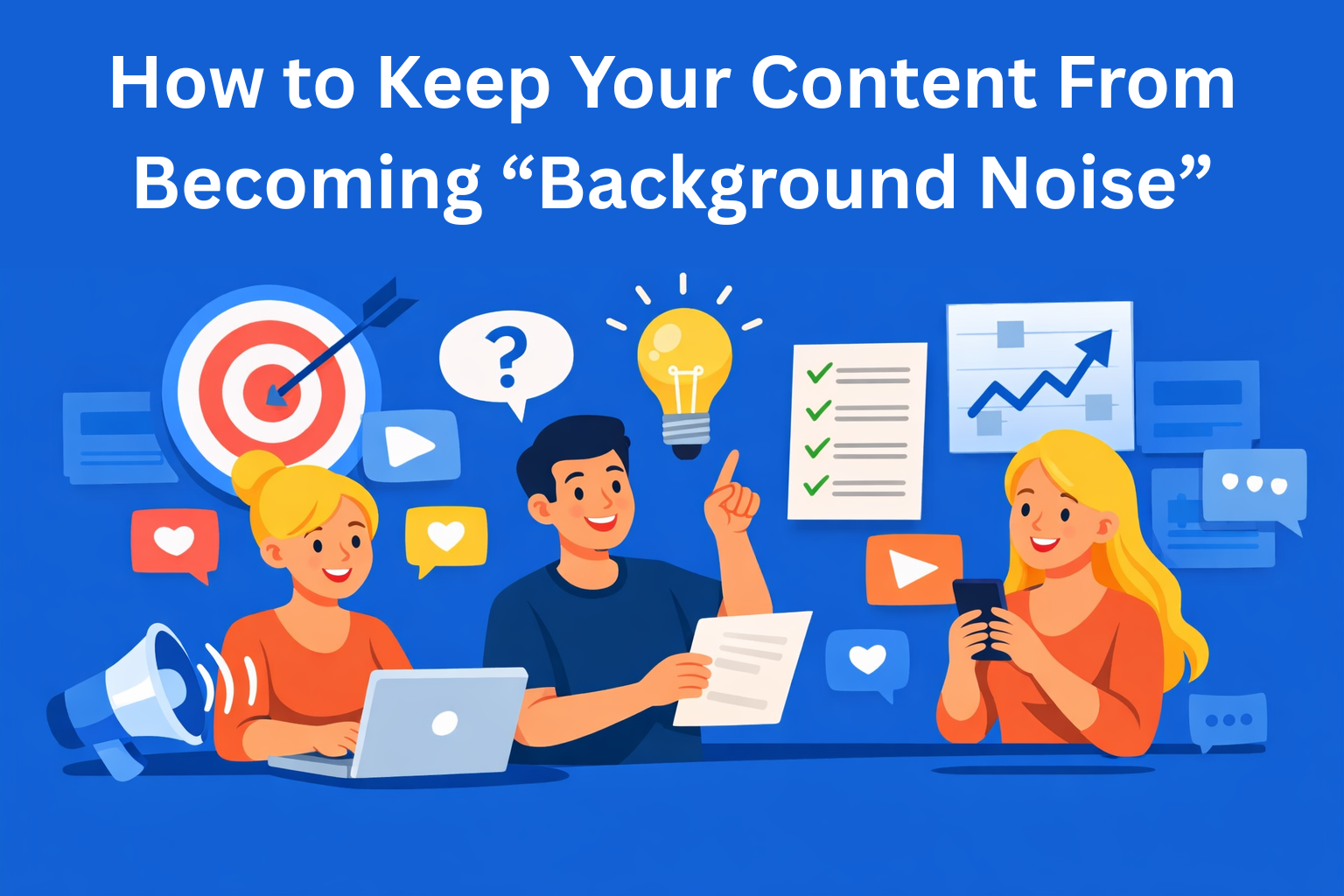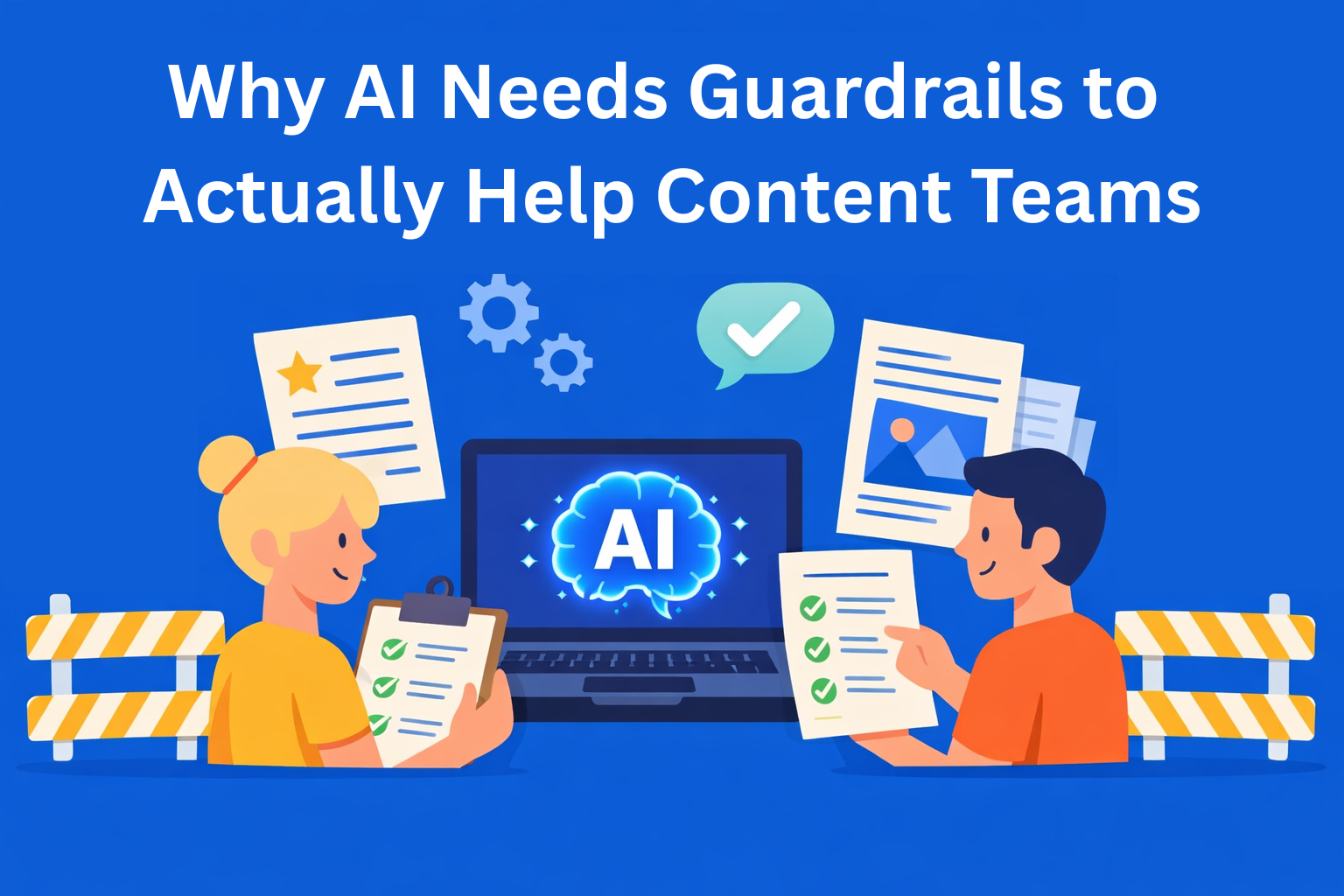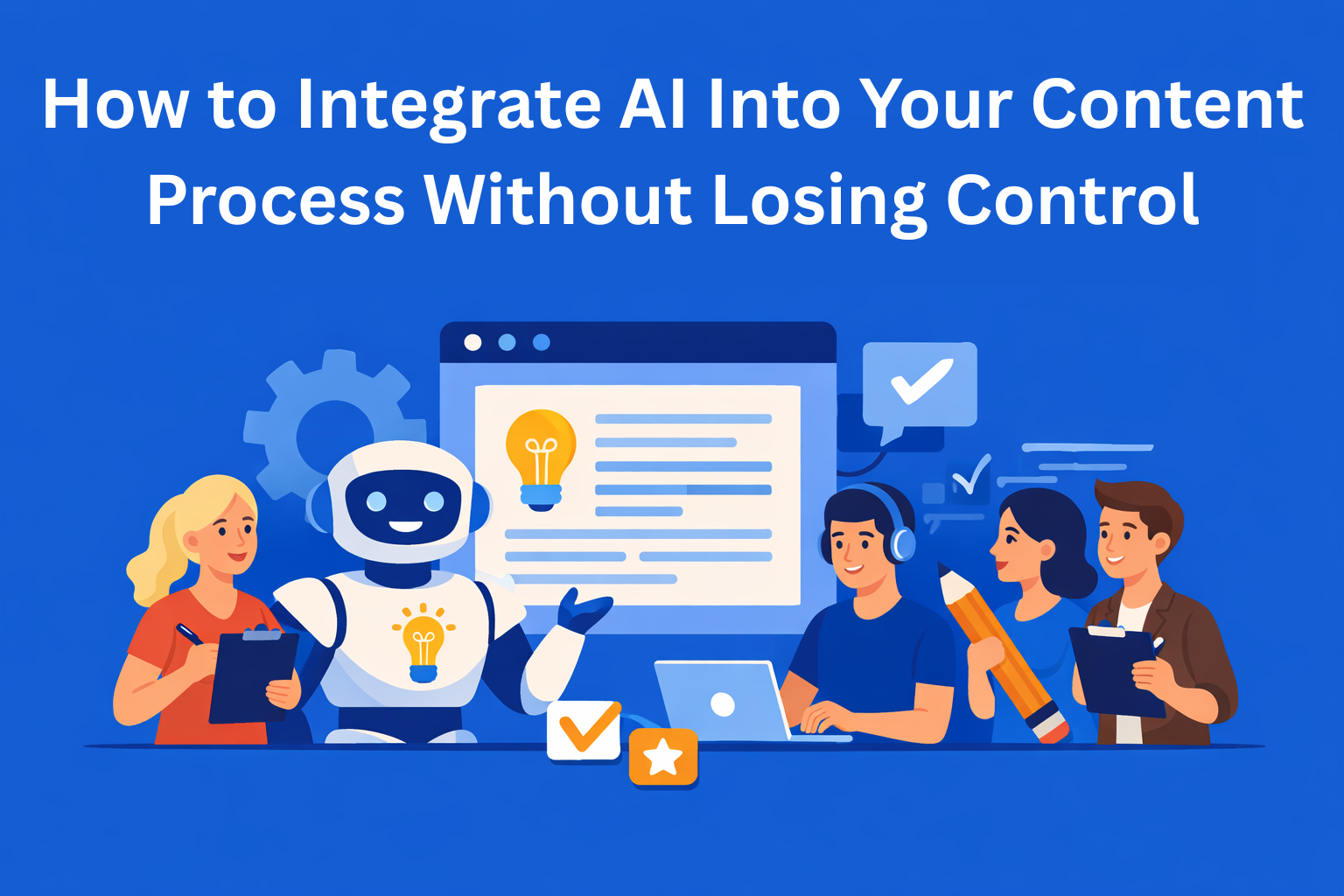15 Tips for Effective Content Planning
Struggling to stay consistent with your content? These 15 simple and effective tips will help you plan smarter, save time, and boost your visibility with a strategy that actually works. No stress, just structure.

Content planning is one of those things we easily overlook while rushing to meet deadlines and putting out fires. But if you want your content to actually have an impact, whether it's building your brand, boosting SEO, or just keeping your sanity, a good content strategy is key.
Here are 15 tips that will help you bring order to your content chaos.
Key Takeaways
- Define clear goals and speak to the right audience - Set SMART objectives and truly understand your readers. That’s the base of every solid content strategy.
- Use planning tools to stay organized and flexible - Editorial calendars and workflow tools like Trello or EasyContent help you keep control, even when things shift.
- Mix content types to match audience habits - Combine blog posts, videos, visuals, and seasonal topics to reach people where they actually engage.
- Repurpose and build around your existing content - Refresh old posts, use audience feedback, and group content into themes to get more mileage with less effort.
- Track results and adjust regularly - Review performance, leave room for spontaneity, and refine your plan monthly based on data and changing priorities.
1. Set Clear Goals
You don’t plan content just because you “have to post something.” You plan it because you know what you want to achieve. Do you want more traffic? More sales? Stronger brand awareness? Great, but be specific. Set SMART goals (specific, measurable, achievable, relevant, and time-bound). That’s the foundation of every solid content strategy.
2. Know Your Target Audience
You’ve heard the phrase “write for people, not for algorithms”? It’s absolutely true. Get to know your audience, who they are, what problems they face, what they enjoy, and where they spend time online.
When you know who you're writing for, you know how to write. That means using words and tone that resonate with them, not just what you think Google wants. When your writing feels like a real conversation, it makes a bigger impact.
3. Analyze the Competition
You’re not copying them, but you’re learning from what already works. Look at their most successful topics, what keywords they target, and how they position themselves. Tools like Ahrefs or SEMrush can give you valuable insights. It’s a shortcut to better ideas. You might discover a hot topic they’re all covering that you’ve overlooked, or spot a gap in their strategy that you can fill.
4. Use a Content Calendar
Planning content without a calendar is like cooking without a recipe. It might work, but often it doesn’t. Create a monthly or quarterly content calendar using tools like EasyContent, Trello, or Google Sheets.
You’ll have less stress and more focus. You’ll get a clear overview of what’s going out and when, and it’ll be easier to mix and match different content types. Plus, you won’t forget important topics or deadlines because everything’s neatly organized in one place.
5. Choose the Right Formats
Not every piece of content has to be a blog post. Sometimes a short video for Instagram works better. Other times, a carousel on LinkedIn does the job. Think about where your audience is and how they like to consume content. The format should fit the purpose. For example, if your audience prefers watching over reading, record a quick video instead of writing an article. And if they’re most active on social media, visual content like images and stories will likely perform better.
6. Automate What You Can
Don’t waste time manually scheduling every post. Use tools like Buffer, Later, or Hootsuite to schedule content ahead of time. Automate newsletters, follow-up sequences, even FAQ responses where possible. Tools like EasyContent can also automate the approval process, every time content moves from one workflow step to another, your team gets notified, so nothing falls through the cracks. Content planning becomes a lot easier when you’re saving time like this.
7. Brainstorm and Group Topics
Got a bunch of ideas but don’t know where to start? Group them by related themes. Create one big main topic (called pillar page), and then build smaller supporting pieces around it. This helps readers find related info more easily and shows your expertise. Plus, search engines like Google understand your site structure better and reward it with improved rankings.
8. Mix Evergreen and Trending Content
Evergreen content is always relevant, how-to guides, tutorials, top lists. Trending content is what’s happening right now, viral trends, and industry news. Mix both to balance long-term and short-term traffic. Evergreen builds a steady foundation that keeps bringing in traffic, while trending topics give you a quick boost in visibility. Smart combos create a content strategy that works today and three months from now.
9. Plan Seasonal Content in Advance
If you know you’re running a Black Friday campaign, don’t plan it two days before. Same goes for holidays, annual reports, or summer breaks. Effective content planning means thinking at least one to two months ahead. That way, you have enough time to craft a strong message, prep visuals, and align everything with your marketing. You’ll feel more in control and avoid missing key opportunities.
10. Include User-Generated Content
People love to feel like they’re part of the story. Include their comments, reviews, or questions; it builds trust and creates a community. Plus, it saves you from creating everything yourself. When someone sees their comment featured, they feel valued and more connected to your brand. And others will be more likely to engage because they know you're listening.
11. Delegate and Share Responsibilities
If you're working in a team, assign roles - someone researches, someone writes, someone publishes. If you’re solo, maybe outsource tasks like editing or design. What matters is knowing who’s doing what and when. When responsibilities are clear, the whole process runs smoother. Everyone knows what’s expected, and it’s less likely things will be rushed or forgotten.
Tools like EasyContent can make this even easier by helping you assign roles, set deadlines, and track progress - all in one place. It’s a great way to keep everything organized and avoid confusion, whether you're working with a team or freelancers.
12. Update Content Regularly
Old posts can still deliver great results if you refresh them. Add new info, update keywords, replace outdated links. It’s a quick and effective way to improve results without creating something new from scratch. People still land on those pages from search, so make sure what they find is helpful and accurate. Plus, Google tends to favor updated content in rankings.
13. Track Your Results
Which post gets the most views? Where do people click, and where do they drop off? Google Analytics, Search Console, and Hotjar can tell you a lot. Without data, your content strategy is just guesswork. Numbers show you what’s working and what’s not. That way, you make smarter decisions and don’t waste time on things that aren’t delivering.
14. Leave Room for Spontaneity
Some ideas or trends pop up out of nowhere. Leave a little space in your calendar so you can react quickly when something relevant comes up. It gives you flexibility and keeps your plan realistic. You can’t always control what happens in your industry, so it’s good to be ready. That way, you can jump on new opportunities without throwing your whole strategy off.
15. Adjust Your Strategy Regularly
Your plan isn’t something you create once and forget. You need to check in now and then to see if it still makes sense. Every month or quarter, review what’s working and what’s not, and make changes. Maybe one topic isn’t performing anymore, while another is gaining traction. Content planning is a living thing, it should grow and evolve with your goals and your audience.
Conclusion
Content planning isn’t flashy, but it’s powerful. These 15 tips can help you build a system that works for you, not against you. Start with 2-3 tips today and build up from there. And remember: the best content isn’t just what you create, but what actually reaches the right people, on purpose.






